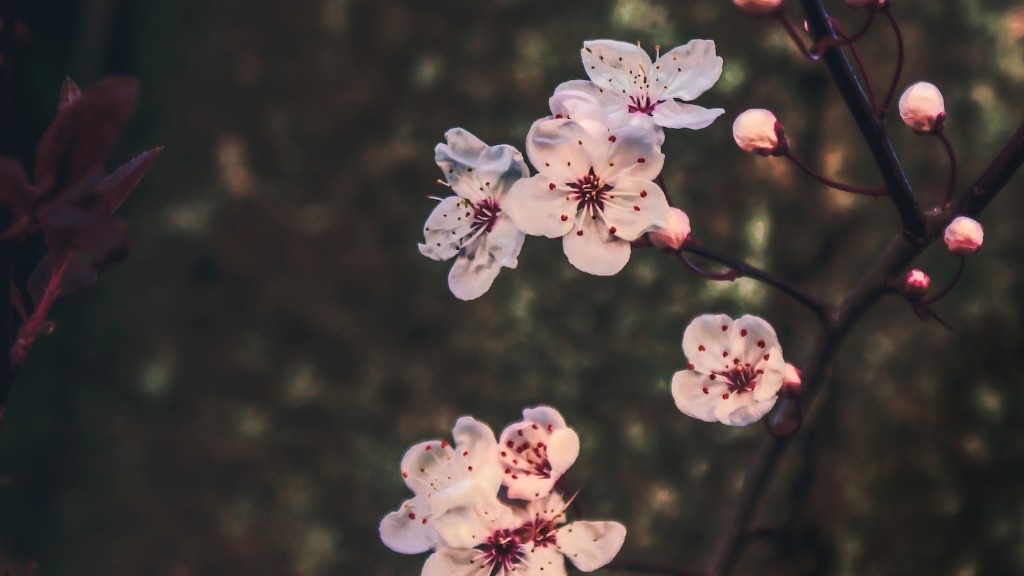Why are the Tips of My Palm Tree Turning Yellow?
If you’re a keen gardener or green-fingered enthusiast, noticing the tips of your palms turning yellow can be extremely concerning. It is the telltale sign of many potential diseases and pests that could be affecting your palm tree, and thus direly needs to be addressed as soon as possible. However, it can take some detective work to identify the precise cause of your yellow palm tips, in order to ensure that you are able to properly prevent and treat the disease accordingly.
Daniel Schmadel, a leading expert in horticulture and botany, stresses the importance of understanding the potential cause of yellowing palm tips: “It is vital to properly inspect and identify the root cause of the issue, as the solutions to treating it vary tremendously depending on the cause. Common causes of yellowed palm tips include improper watering techniques, nutrient deficiencies, environmental changes, and pests. Once you’ve identified the cause, you can then begin to appropriately approach a solution that includes appropriate treatment and preventative measures to ensure healthy trees.”
Improper watering techniques can be one of the most common causes of yellow palm tips. In terms of duration, it is important to water well but not excessively, meaning allowing the soil to dry slightly in between watering. In addition, it is necessary to water at the base of the plant to prevent the spread of parasitic diseases like Fungus and root rot. An indication of overwatering is yellow leaves and a decreased rate of growth. Conversely, under watering can cause the tree and leaves to turn yellow as well due to lack of vital hydration.
Moreover, nutrient deficiencies can also be a significant cause of yellow palm leaves. Although palms do not require as many nutrients as other plants, they are still often subject to a lack of certain micronutrients, more specifically magnesium, iron and manganese. Regular fertilizing is key to ensure that your palms are receiving the necessary nutrients required. This can usually be done during the spring time and throughout the summer season when temperatures are high and the tree is growing steadily.
Environmental changes can have significant influences over the health of your palm tree. Too much or too little sun, for example, can be a huge contributing factor for many unhealthy palms. You should always look to maintain a balance that works with your palm and environment, as overexposure to direct sunlight can cause your palm to wilt and become weak. In addition, overwatering in a hot and humid summer climate can result in yellowing leaves, as the plants are unable to receive enough oxygen. It is thus critical to monitor the amount of water your palms are receiving, especially in the summer season.
Finally, pests can cause significant damage to your palm. While palms are generally quite resistant to pests and diseases, infestations can occur, with the most common being mealybugs, red mites, and thrips. It’s important to recognise the type of pest and treat accordingly. Pesticides and other chemical solutions should be used as a last resort, as it is significantly healthier to use natural and organic methods to fend of pests. These include introducing helpful predators and assuring your palms receive the necessary nutrients, so that pests are unable to thrive as well.
Symptoms of Yellowing Palms
Yellowing palms may present with a wide variety of symptoms. While yellowing is a clear sign that something is happening to your palm tree, other observed symptoms should be taken into account to properly identify the root of the issue. These could include the presence of brown spots, wilting fronds, fallen fruits, and so on. Additionally, pay extra attention to the nature of the yellowing itself. Is it a gradual yellowing, or a suddenly-occurring yellowing? Furthermore, is it consistent among all the fronds, or more centralised to certain fronds? This could indicate different causes, and can help to get a better understanding of the underlying cause.
Ensuring Good Palm Health
Overall, the health of your palm tree is of utmost importance. Palms are one of the most iconic trees that can add a sense of grandeur and beauty to any environment, and so it is very important for them to be nurtured and provided with the necessary care that they need to survive and thrive. While exercising discipline with regards to watering and nutrient management, bug control, and sun exposure is key, you should always keep an eye on the overall health of your tree, and the yellowing tips should be addressed as soon as possible.
Diagnosis of Yellowing Palms
In the event that yellow leaves are noticed, it is important to immediately diagnose and identify the cause to ensure an appropriate treatment is provided. This should begin with investigation and exploration, which could include visual and physical inspection of the plant and the surrounding environment. Alternatively, any abnormalities observed in the soil should be recorded, as this could be a potential cause of the issue. Furthermore, a soil test, using a laboratory sample of the soil, can be beneficial in identifying any necessary nutrient deficiencies, or abnormal characteristics in the soil, such as pH levels.
Treatment of Yellowing Palms
Once the root cause has been properly identified, determining the appropriate treatment becomes the next step. Generally, the most common and effective solution is to address the triggering factor by attending to nutrients deficiencies, watering techniques, and pest management. If the yellowing has been caused by nutrient deficiencies, then fertilization may be necessary. For example, if the deficiencies involved Magnesium, Zinc or Manganese, a fertilizer specifically tailored to palms may be able to resolve this issue. In terms of pests and diseases, control measures should be taken, such as introducing natural predators to help fend off any pests, or using more organic and natural methods to treat the pests rather than damaging chemical solutions.
Reversal of Yellowing Palms
Once an appropriate solution has been identified, reversing the yellowing will be the main outcome. Once your palms have begun to receive the necessary nutrients, been watered correctly, and temperatures and humidity have been regulated, then your tree will begin to gradually return to a much healthier state. However, it is important to note that depending on the severity of the yellowing and the underlying factors, it could take from a week to many months for full recovery to occur. Regular monitoring of the tree’s progress and condition is necessary.
Preventing Yellowing Palms
Most importantly, for palm tree enthusiasts, prevention is always better than cure. Thus, practices should be taken on to ensure that your palms remain healthy, and to reduce the risk of any yellowing. Good watering practices are absolutely necessary, including long and shallow watering at the base of the tree, while avoiding overwatering the plant. Furthermore, to ensure that any nutrient deficiencies are addressed, a regular fertilizing regime should be conducted throughout the spring and summer season. Finally, any pests should be routinely monitored, with natural methods and solutions being used if any pests are to be identified.


